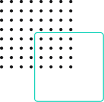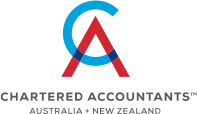In the wake of coronavirus (COVID-19) and this time of great economic uncertainty, the Australian Government has announced a $17.6 billion economic stimulus package as a measure to protect and maintain confidence in the local economy, and support investments and employment.
To accompany this package, bills have been introduced to Parliament with key tax measures for urgent consideration, to ensure they reach business owners as soon as possible.
We highly recommend you review and understand these changes, and seek advice from experienced advisers like Nitschke Nancarrow to identify what your business is eligible for and how you can gain the most from these new incentives.
This blog includes key information and insights which will need to be applied to your unique situation, along with case studies provided by business.gov.au.
Business benefits from increased asset threshold
If your business has an aggregated turnover below $500 million, then you could be eligible for this benefit.
From 12 March 2020 to 30 June 2020, the instant asset write-off threshold has been increased to $150,000. This proposal applies to new or second-hand assets first used or installed ready for use in this timeframe.
Eligible assets include those that can be depreciated under Division 40 of the Income Tax Assessment Act 1997, including plant, equipment and specified intangible assets like patents. However, it does not apply to second-hand Division 40 assets or buildings and other capital works depreciable under Division 43.
Case Study
Owen owns a company, ON Point Farms Pty Ltd, through which he operates a farming business in the Central Wheat Belt of Western Australia. ON Point Farms Pty Ltd has an aggregated annual turnover of $25 million for the 2019 20 income year. On 1 May 2020, Owen purchases a second-hand tractor for $140,000, exclusive of GST, for use in his business.
Under existing tax arrangements, ON Point Farms Pty Ltd is not able to immediately deduct assets costing more than $30,000 and instead would depreciate the tractor using an effective life of 12 years. Choosing to use the diminishing value method, ON Point Farms Pty Ltd would claim a tax deduction of $3,899 for the 2019 20 income year.
Under the new $150,000 instant asset write off, ON Point Farms Pty Ltd would instead claim an immediate deduction of $140,000 for the purchase of the tractor in the 2019 20 income year, $136,101 more than under existing arrangements. At the company tax rate of 27.5 per cent, Owen will pay $37,427.78 less tax in 2019 20.
Small business benefits from the BBI
This 15-month investment incentive is another benefit available to businesses with an aggregated turnover of below $500 million.
Specifically, depreciation deductions will be accelerated on certain new assets purchased from 12 March 2020 and first used or installed by 30 June 2021 (unless they fall under the instant asset write off rules stated above).
A deduction of 50 per cent of the asset cost will be applied, with existing depreciation applying to the balance of the asset’s cost.
Eligible assets include those that can be depreciated under Division 40 of the Income Tax Assessment Act 1997, including plant, equipment and specified intangible assets like patents. However, it does not apply to second-hand Division 40 assets or buildings and other capital works depreciable under Division 43.
Case Study
Joan and Bruce own a company, NC Transport Solutions Pty Ltd, through which they operate a haulage business on the North Coast of New South Wales. NC Transport Solutions Pty Ltd has an aggregated annual turnover of $8 million for the 2019 20 income year. On 1 May 2020, Joan and Bruce purchase a new truck for $260,000 exclusive of GST, for use in their business.
Under existing tax arrangements, NC Transport Solutions Pty Ltd would depreciate the truck using their small business simplified depreciation pool. Under the pooling rules, NC Transport Solutions Pty Ltd would deduct 15 per cent of the asset’s value upon entry to the pool, leading to a tax deduction of $39,000 for the 2019-20 income year.
Under the new BBI, NC Transport Solutions Pty Ltd would instead claim an up-front deduction of 50 per cent of the truck’s value ($130,000) before placing the asset in their small business simplified depreciation pool. Joan and Bruce would then claim a further 15 per cent deduction on the depreciated value of the truck ($19,500). As a result of the two deductions, Joan and Bruce are able to claim a deduction totalling $149,500 in the 2019-20 income year, $110,500 more than under existing arrangements. At the company tax rate of 27.5 per cent, Joan and Bruce will pay $30,387.50 less tax in the 2019-20 income year.
Monthly or quarterly lodgements
Your business could be eligible for tax-free payments of up to a maximum of $25,000.
This incentive targets businesses that employ staff with a turnover of less than $50 million, based on PAYG withholding obligations.
Eligible businesses that withhold tax to the ATO on their employees’ salary and wages will receive a payment equal to 50 per cent of the amount withheld.
Furthermore, eligible businesses that pay salary and wages will receive a minimum payment of $2,000, even if you’re not required to withhold tax.
Quarterly lodgers will be eligible to receive the payment for the quarters ending March 2020 and June 2020.
Monthly lodgers will be eligible to receive the payment for their March 2020, April 2020, May 2020 and June 2020 lodgements. To provide a similar treatment to quarterly lodgers, the payment for monthly lodgers will be calculated at three times the rate (150 per cent) in the March 2020 activity statement.
If your business is eligible, these payments will be delivered as a credit on your activity statements from 28 April 2020.
UPDATE:
Announced on 22nd of March 2020 as a part of the second stimulus package these amounts were increased to employers being eligible to receive a payment equal to 100 per cent of their salary and wages withheld (up from 50 per cent), with the maximum payment being increased from $25,000 to $50,000. In addition, the minimum payment is being increased from $2,000 to $10,000.
An additional payment is also being introduced in the July – October 2020 period. Eligible entities will receive an additional payment equal to the total of all of the Boosting Cash Flow for Employers payments they have received. This means that eligible entities will receive at least $20,000 up to a total of $100,000 under both payments.
Case Studies
Sarah’s Construction Business – Monthly Lodgements
Sarah owns and runs a building business in South Australia and employs 8 construction workers on average full-time weekly earnings who each earn $89,730 per year. In the months of March, April and June for the 2019-20 income year, Sarah reports withholding of $15,008 for her employees on each business activity statement (BAS).
Under the Government’s changes, Sarah will be eligible to receive the Boost on lodgment of each of her BAS. Sarah’s business receives:
– A payment of $22,512 for the March period, equal to 150 per cent of her total withholding.
– A payment of $2,488 for the April period, before she reaches the $25,000 cap.
– No payment for the May period, as she has now reached the $25,000 cap.
– No payment for the June period, as she has now reached the $25,000 cap.
Sean’s Hairdresser Salon – Quarterly Lodgement
Sean owns a hairdresser’s salon on the Gold Coast. He employs one apprentice who earns $37,970 per year and two stylists who both earn $44,260 per year. In the March and June 2020 quarterly BAS, Sean reports withholding of $4,570 for his employees.
Under the Government’s changes, Sean will be eligible to receive the payment on lodgement of his BAS.
Sean’s business will receive:
– A payment of $2,285 for the March quarter, equal to 50 per cent of his total withholding.
– A payment of $2,285 for the June quarter, equal to 50 per cent of his total withholding.
Sean’s business will receive a total payment of $4,570.
Sean may also benefit from the assistance for existing apprentices and trainees measure.
Tim’s Courier Run – Payments for entities that withhold less than $4,000
Tim owns and runs a small paper delivery business in Melbourne, and employs two casual employees who each earn $10,000 per year. In the March and June 2020 quarterly BAS, Tim reports withholding of $0 for his employees as they are under the tax-free threshold.
Under the Government’s changes, Tim will be eligible to receive the payment on lodgement of his BAS.
Tim’s business will receive:
– A payment of $2,000 for the March quarter, as he pays salary and wages but is not required to withhold tax.
– No payment for the June quarter, as he has already received the minimum payment and he has no withholding obligation.
– If Tim begins withholding tax for the June quarter, he would need to withhold more than $4,000 before he receives any additional payment.
Wage subsidies
From early April 2020, eligible employers with less than 20 full-time employees can potentially receive wage subsidies to support the retention of apprentices and trainees.
Group training organisations and employers of any size that re-engage an eligible out-of-trade apprentice or trainee will be eligible for the subsidy.
However, your apprentice or trainee must have been in training with your business as of 1 March 2020.
You can register for this subsidy from early next month, although final claims for this payment must be lodged by 31 December 2020.
Case Study
David’s Plumbing is a small business that employs 10 people, including two full time Australian Apprentices.
Taylor is a first year Australian Apprentice, aged 20, undertaking a Certificate III qualification. She commenced her apprenticeship with David’s Plumbing on 6 February 2020. Taylor receives a weekly wage of $532.89.
Lisa is a third year Australian Apprentice, aged 29, undertaking a Certificate IV qualification. She commenced her apprenticeship with David’s Plumbing on 18 November 2017. She receives a weekly wage of $772.71.
David’s Plumbing are eligible for Supporting Apprentices and Trainees which pays 50 per cent of the apprentices’ wages that have been paid by David’s Plumbing since 1 January 2020.
David’s Plumbing will receive:
– $9,059 subsidy for employing Taylor for 6 February 2020 to 30 September 2020
– $15,068 subsidy for employing Lisa for 1 January 2020 to 30 September 2020
ATO measures to provide relief to Australian taxpayers
If your business isn’t eligible for any of the incentives described above, you don’t need to worry. There are several options available to assist all businesses impacted by COVID-19. These measures provided by the ATO include:
– Deferring by up to four months the payment date of amounts due through the business activity statement (including PAYG instalments), income tax assessments, fringe benefits tax assessments and excise.
– Allowing businesses on a quarterly reporting cycle to opt into monthly GST reporting in order to get quicker access to GST refunds they may be entitled to.
– Allowing businesses to vary PAYG instalment amounts to zero for the March 2020 quarter. Businesses that vary their PAYG instalment to zero can also claim a refund for any instalments made for the September 2019 and December 2019 quarters.
– Remitting any interest and penalties, incurred on or after 23 January 2020, that have been applied to tax liabilities.
– Working with affected businesses to help them pay their existing and ongoing tax liabilities by allowing them to enter into low interest payment plans.
The JobKeeper payment
This initiative was announced on 30 March 2020. Read more.
Get Advice
In tough times, these are important opportunities that could protect or even save your business. We’re happy to guide you through the process. Contact the team at Nitschke Nancarrow now.
The information contained on this article is general in nature and does not take into account your personal situation. You should consider whether the information is appropriate to your needs, and where appropriate, seek professional advice from a financial adviser.
Taxation, legal and other matters referred to on this website are of a general nature only and are based on Nitschke Nancarrow’s interpretation of laws existing at the time and should not be relied upon in place of appropriate professional advice. Those laws may change from time to time.
Nitschke Nancarrow specialises in accounting, tax and financial advice for superannuation. Contact us now for a no obligations discussion about your needs.














